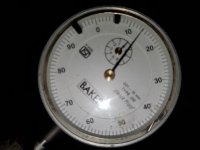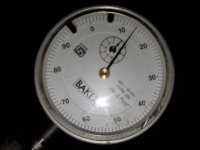Morning all,
I measured the end float on my 73 TR6. I'm using Dial test Indicator and have it positioned against the fan extender. I measured it a couple of times and I am getting 11-12 mm.
If I did the math correctly that comes out to .4". Sounds like the thrust washers may be worn. Did I do everything right? When I watch it move while the wife pushes the clutch I don't see it moving that much. Hmmm I must be doing something wrong
I measured the end float on my 73 TR6. I'm using Dial test Indicator and have it positioned against the fan extender. I measured it a couple of times and I am getting 11-12 mm.
If I did the math correctly that comes out to .4". Sounds like the thrust washers may be worn. Did I do everything right? When I watch it move while the wife pushes the clutch I don't see it moving that much. Hmmm I must be doing something wrong

 Hi Guest!
Hi Guest!

 smilie in place of the real @
smilie in place of the real @
 Pretty Please - add it to our Events forum(s) and add to the calendar! >>
Pretty Please - add it to our Events forum(s) and add to the calendar! >> 



